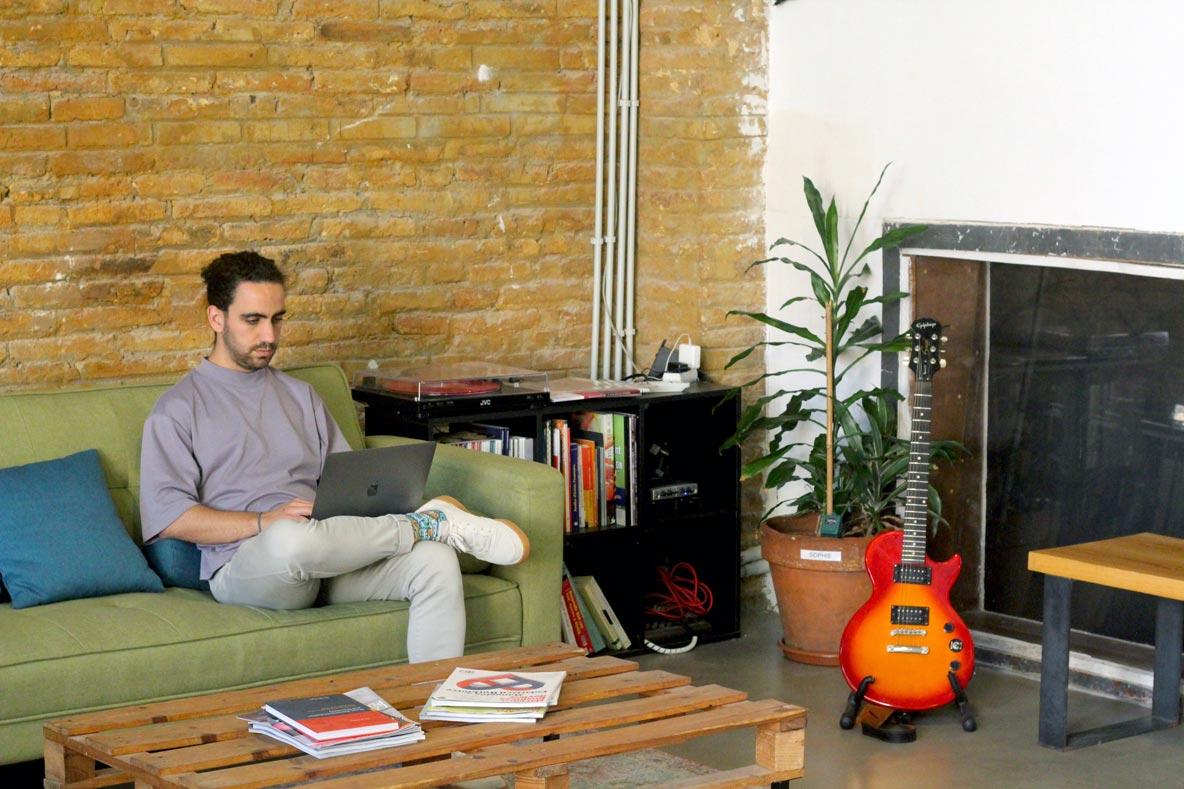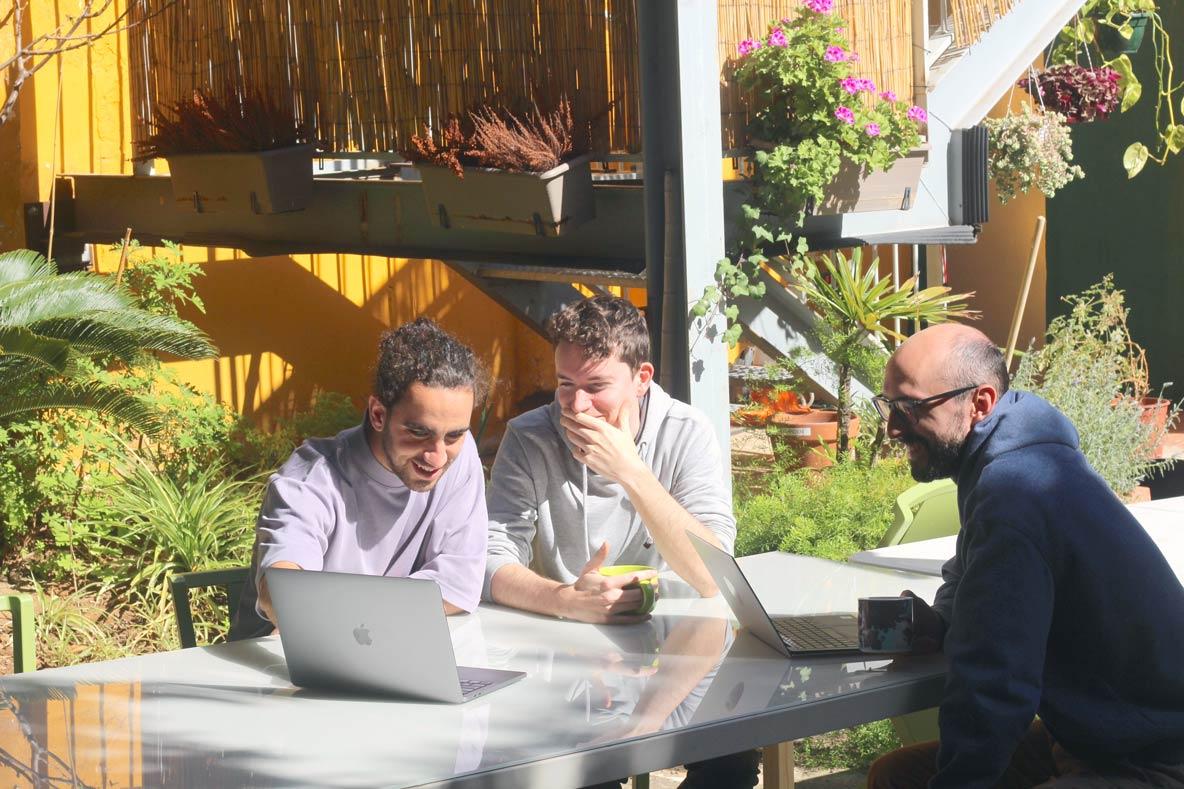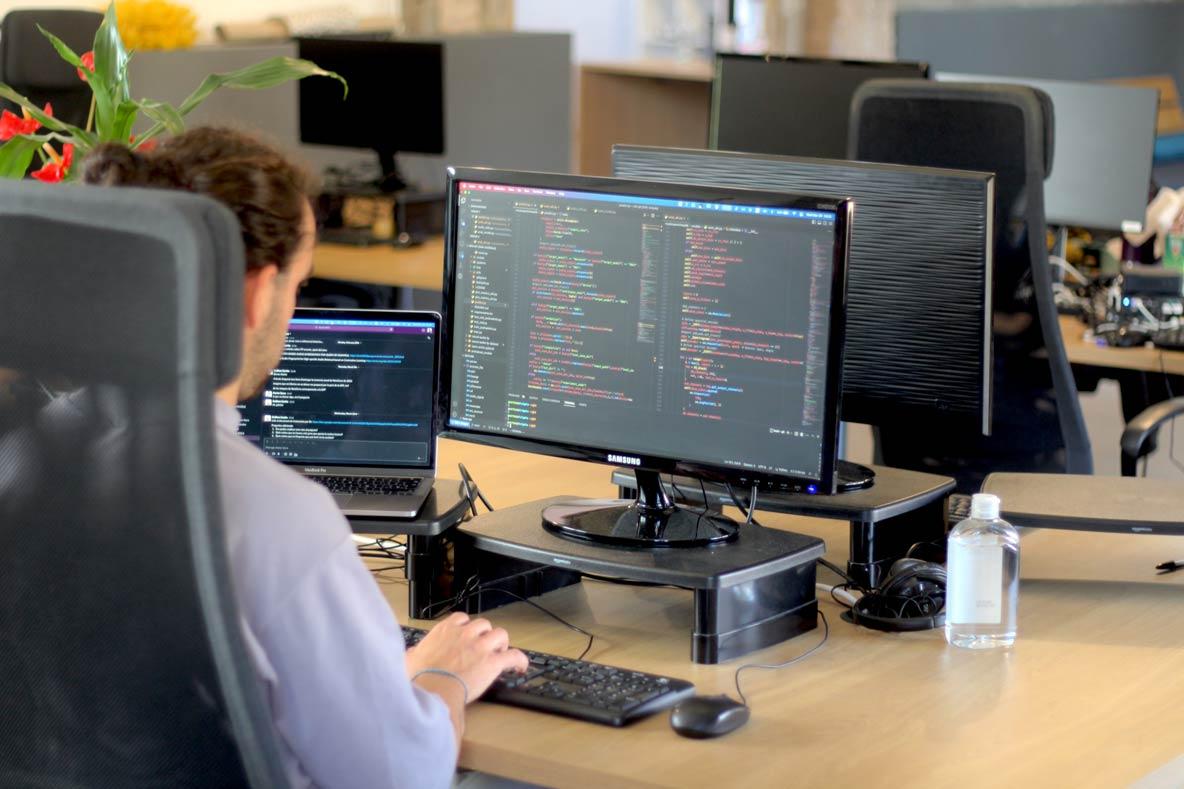
Segur que més d’una vegada hem agafat el mòbil per esbrinar quina és la cançó que està sonant en un bar o en una sèrie que estem mirant a la televisió. Avui dia és un gest que fem habitualment sense ser conscients de la tecnologia que hi ha al darrere d’aplicacions com Shazam, per posar un exemple. Aquesta tecnologia es coneix com a “Audio Fingerprinting” (empremta digital d’àudio), i consisteix bàsicament a identificar un arxiu d’àudio mitjançant l’extracció de característiques úniques del seu senyal. L‘àudio fingerprinting és una tècnica utilitzada per identificar un enregistrament d’àudio en particular. Aquesta tècnica converteix un enregistrament d’àudio en un conjunt de dades úniques que s’usen per identificar la gravació. El procés d’àudio fingerprinting implica diversos passos, com l’extracció de característiques de l’àudio, la creació d’una empremta digital d’àudio i la cerca de coincidències a una base de dades.
El reconeixement de sons ha esdevingut una tasca important en molts camps, com la seguretat, la música i la publicitat. No obstant això, el reconeixement de sons continua sent un desafiament a causa de la complexitat dels sons i la varietat de fonts de so a l’entorn. Una de les aplicacions més comunes és la identificació de cançons a la ràdio o en una llista de reproducció en línia. La tècnica d‘àudio fingerprinting es fa servir per identificar la cançó en funció de les característiques úniques de la gravació d’àudio. Amb aquesta tecnologia es poden identificar cançons de forma automàtica, permetent identificar quina cançó està sonant i proporcionant informació com el títol, l’artista i l’àlbum associats a la cançó. Però també pot ser molt útil a detectar cançons que s’han penjat il·legalment, a través de la comparació de les empremtes digitals de les cançons amb les empremtes digitals de les cançons legals a la base de dades.
«L’Audio Fingerprinting fa temps que s’estudia, però hi ha certs escenaris on no funciona bé. Em refereixo a entorns sorollosos com poden ser concerts, bars, espectacles a l’aire lliure, o també en entorns on la música sona en segon pla, com passa molt sovint a la ràdio i televisió»
Guillem Cortès Sebastià Tweet
Desenvolupar un sistema de monitoratge de música és un desafiament tecnològic, especialment quan s’han de considerar els escenaris sorollosos en els quals sovint s’escolta música, com ara concerts, bars o espectacles a l’aire lliure. Per solucionar aquest problema, neix el projecte NextCore de l’empresa BMAT, qui ha creat una tecnologia innovadora per al monitoratge de música en temps real. L’empresa neix el 2005 com un spin-off del grup de recerca MTG (Music Technology Group) de la Universitat Pompeu Fabra (UPF). La recerca ha estat sempre present a l’empresa i ha jugat un paper determinant en el seu èxit, així ho confirmen les seves diverses patents i publicacions. BMAT ja ha engegat dos Doctorats Industrials, el primer projecte el va portar a terme el doctor industrial Blai Meléndez Catalán, un projecte exitós que ha desenvolupat una tecnologia que ja s’ha incorporat als serveis que ofereix l’empresa.

En Guillem Cortès Sebastià és el doctorand del segon projecte de Doctorats Industrials que es realitza a BMAT en col·laboració amb la UPF, sota la supervisió del professor Xavier Serra i el doctor Emilio Molina. L’objectiu del projecte consisteix a investigar com millorar amb algoritmes d’aprenentatge profund el monitoratge musical. Cortès sempre ha tingut una relació intensa amb la música, fins a descobrir la importància de la relació entre la música i les matemàtiques. La música i les matemàtiques estan estretament relacionades. De fet, molts dels aspectes fonamentals de la música, com el ritme, la melodia, l’harmonia i la forma, es poden descriure i entendre mitjançant conceptes matemàtics. A Cortès el va sorprendre descobrir com estan relacionats els sons que escoltem en la música i les matemàtiques. Per posar un exemple, La nota “La3” que sovint és utilitzada com a nota de referència per afinar, emet una ona sonora que vibra a una freqüència de 440 Hz. Si toquen la mateixa nota, però una octava més alta, l’anomenada “La4”, la freqüència és de 880 Hz, el doble de la primera. Això també passa amb els acords que sonen bé a les nostres oïdes, les freqüències de les notes que els formen tenen una relació matemàtica senzilla.
«El gran desafiament que es planteja BMAT és fer servir l’Audio Fingerprinting en escenaris sorollosos i en situacions en què la música sona en segon pla, com passa sovint a la ràdio i televisió»
Guillem Cortès Sebastià Tweet
Cortès ens explica que l’objectiu del projecte és millorar els sistemes de monitoratge de música i fer-los més robusts en múltiples escenaris, així com crear eines per tal d’incentivar la recerca en aquest camp: “l’Audio Fingerprinting fa temps que s’estudia, però hi ha certs escenaris on no funciona bé. Em refereixo a entorns sorollosos com poden ser concerts, bars, espectacles a l’aire lliure, o també en entorns on la música sona en segon pla, com passa molt sovint a la ràdio i televisió”. El sistema de monitoratge del projecte NextCore es basa en la tecnologia Audio Fingerprinting que s’ha explicat a l’inici d’aquest article, i el gran desafiament que es planteja BMAT és fer servir l’Audio Fingerprinting en escenaris sorollosos i en situacions en què la música sona en segon pla, com passa sovint a la ràdio i televisió.
Gràcies a la col·laboració entre BMAT i la UPF, el projecte NextCore pot canviar la manera com els sistemes de monitoratge de música s’adapten a entorns sorollosos. Aquesta recerca, que combina música i matemàtiques, té el potencial d’incentivar el desenvolupament de noves eines en el camp de la identificació d’àudio.


